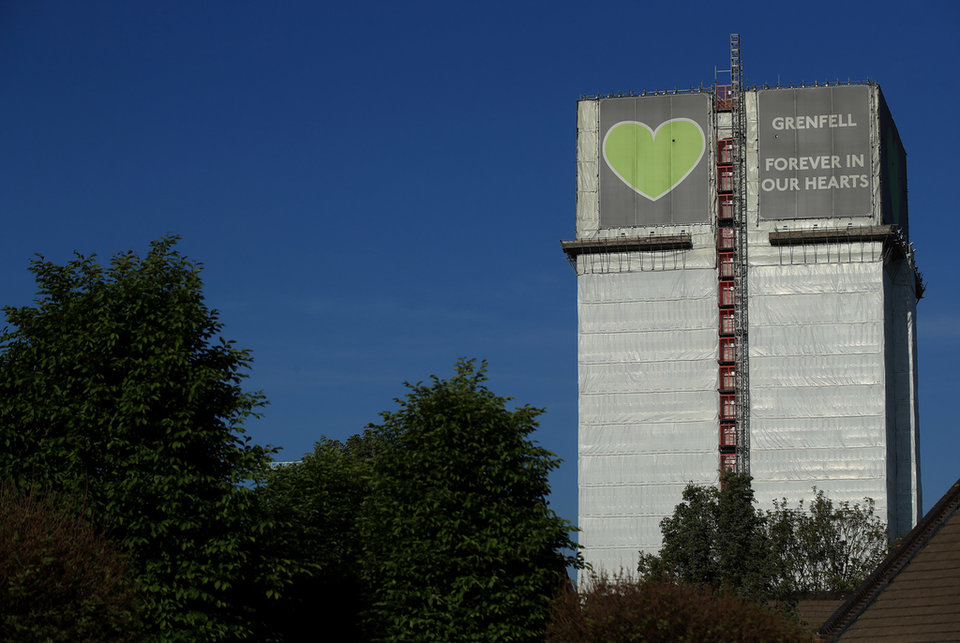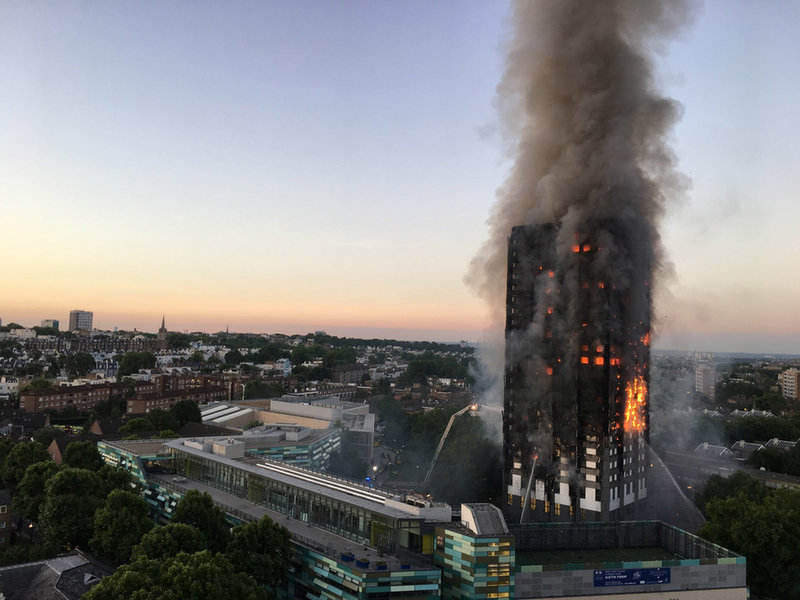Building safety
Residential tower safety: what has changed since Grenfell?
Four years on from the fire at Grenfell Tower in London that killed 72 people, the debate around cladding and building safety continues while thousands of residents remain in potentially unsafe properties. Alex Love finds out how government and industry have responded to the UK’s building safety scandal that emerged in the wake of the Grenfell fire, and what has been done in the years since.

T
he Grenfell Tower fire in 2017 brutally exposed the flaws in regulations and failures in oversight regarding fire safety for high-rise buildings in England. Yet unpicking decades of legislation and standards, which some described as ‘incomprehensible’, has taken up much of the four years since the fire.
The ongoing formal inquiry into the fire continues to reveal a litany of issues from the West London tower block. Hazards include the combustible cladding and insulation on the tower’s exterior, as well as an ineffective smoke extraction system.
The inquiry also heard about the failure of contractors to consult fire safety experts when they replaced one of the block’s main gas supplies. This weakened fire compartmentation and left large holes that reportedly allowed smoke to spread more rapidly throughout the tower on the tragic night of 14 June 2017.
In addition, the inquiry heard how safety concerns from residents were oftenignored in the years before the blaze.
Alongside the formal inquiry, the UK Government also commissioned Dame Judith Hackitt to conduct an independent review of the construction industry practices that ultimately led to the Grenfell Tower fire. Published in 2018, the Hackitt report identified serious issues in building regulations, practices and accountability, then proposed measures to rectify these.
The resulting Building Safety Bill is based heavily on Hackitt’s findings and recommendations. The government describes the bill as ‘the most significant and fundamental changes to building safety legislation in decades’. Most measures are expected to be implemented by 2023 and for many in the industry, the changes are overdue.
“The whole industry should be looking to culturally change and systemically change,” says Paul Bussey, senior technical consultant at AHMM Architects and RIBA chartered architect. The Building Safety Bill is moving in the right direction, but there is a very long way ahead, he says, adding: “This cost-cutting culture has to go.”
Cladding and complicated regulation
What caused the fire to rapidly spread up the 24-storey Grenfell tower was found to be aluminium composite material (ACM) cladding and combustible insulation, used on the exterior of the building as part of renovations completed in May 2016.
The Grenfell inquiry heard that to cut costs, zinc panels with fire-resistant cores were swapped for aluminium panels with polyethylene cores that were flammable. However, Bussey argues that regulations were unclear and that the blame should not be solely pinned on Studio E, the architects behind the renovation designs. The company has since gone into liquidation
To say that architects were incapable or not qualified is a complete misappropriation of the truth.
“Regulations are, as Judith Hackitt pointed out, incredibly complicated and incomprehensible in terms of fire,” Bussey says.
“As a consequence, not only did Studio E put cladding on the outside of the building – they met the approved documents, but they didn't meet the functional requirements of the building regulations because they didn't stop fires spreading over the walls. But this is so vague and ambiguous. It says: 'You must stop the fire spreading over the walls of the building'.
“And then it's got an approved document that says what you need to do to provide that, which is Class 0 and limited combustibility materials – which Studio E used and they turned out not to be acceptable because there was fraudulent marketing, and fraudulent product information. To say that architects were incapable or not qualified is a complete misappropriation of the truth.”
In 2018, the government banned installation of the same type of ACM cladding and other combustible materials on the external walls of residential buildings higher than 18m. Housing secretary Robert Jenrick has since also announced that sprinklers will be mandatory on all new-build residential buildings taller than 11m. Before the Grenfell fire, the regulation applied to buildings taller than 30m.

The fire at Grenfell Tower on 14 June 2017 killed 72 people and exposed the flaws in regulations and failures in oversight regarding fire safety for high-rise buildings in England.
Legal issues remain
The ban on combustible materials does not solve the problem of unsafe cladding on existing buildings. And who pays for its removal is a contentious issue.
The government says it has set aside funding of around £5.1bn to remove cladding, although estimates for the full remediation works total £15bn. The government has also set the eligibility criteria for buildings taller than 18m. For buildings lower than 18m, some leaseholders say they are individually facing bills of £50,000.
It is not entirely clear just how many buildings are affected. Figures released by the government estimate that there are 12,500 residential buildings taller than 18m in England.
Furthermore, an estimated 77,500 buildings measure 11m to 18m. This amounts to approximately 80,000, representing a potential 1.27 million individual leasehold flats in buildings higher than 11m. And it is understood that as many as 839,000 flats from this total could be in buildings with some variety of unsafe cladding.
Where we're using standards, legislation like the approved documents, we expect them to be clear and written in plain English, and intelligible. But currently, they're not.
Leaseholders have been left in limbo. Many are facing bankruptcy while being stuck in properties they can’t afford to fix and are unable to sell due to the unsafe cladding.
They may have another option from the Building Safety Bill, but this could also prove costly. The bill extends the period for when developers can be prosecuted for unacceptable workmanship from six to 15 years. This can be applied retrospectively from when the Building Safety Bill becomes law, which may not be until 2023 after secondary legislation is passed and the transition timeline ends.
Bussey has concerns regarding this 15-year end date for legal action.
“Developers are going to be starting to try and sue architects for lack of competence, going for their PI insurance,” he says. “That is a big issue that needs to be fully addressed. We are strongly of the position where we feel, yes, we're going to upgrade the fire qualifications for architects. But that is really to better understand what a fire engineer does – not become a fire engineer. We're still going to appoint fire engineers where necessary.
“Where we're using standards, legislation like the approved documents, we expect them to be clear and written in plain English, and intelligible. But currently, they're not. They're written in some kind of ‘Whitehallese’ gobbledygook, which is incomprehensible. We've got to somehow break through that major problem in our industry to make it intelligible and comprehensible, so anyone can apply it.”
Addressing flaws in building development processes
Historically, it has not always been easy to determine who has ultimate responsibility for fire safety within a building. The Building Safety Bill seeks to change this by also reforming existing Fire Safety Order regulations.
Each high-rise building will have a designated responsible person to ensure compliance with regulations, with directors or managers of companies personally liable for any failings. The newly established Building Safety Regulator, sitting within the Health and Safety Executive, will have powers to investigate construction issues and send out compliance notices.
Breaching the rules could result in those responsible being jailed for two years. The Building Safety Regulator will also establish and oversee the Industry Competence Committee, the Building Advisory Committee and a residents' panel.
If developers wish to make any safety-critical changes during construction, they will have to apply for permission from the regulator.
The bill also takes into account common flaws in the design and building process. Materials and designs are often changed during construction by contractors and their sub-contractors without the architects being consulted. There has also been an issue with inadequate or non-existent handover documents for new buildings.
The bill seeks to address both issues. Firstly, it introduces three ‘gateways’ in the design and construction process. Essentially, each gateway requires completion of a checklist before the developer can progress to the next stage.
The first gateway is during the town planning stage and involves a fire statement for the proposed designs. Gateway two takes place before construction and is described as ‘a hard stop where construction cannot begin until the Building Safety Regulator is satisfied that the duty holder’s design meets the functional requirements of the building regulations and does not contain any unrealistic safety management expectations’.
Gateway three involves assessment of the finished building by the building control body, with a completion certificate awarded if successful. Only then can occupation follow. If developers wish to make any safety-critical changes during construction, they will have to apply for permission from the regulator.
Best practice in documentation and procurement
The issue surrounding building documentation will be improved by what Hackitt referred to as a ‘golden thread’. This will involve a complete digital record of the building’s history, from design through to construction, as well as reports of any maintenance or refurbishment being done later.
“Getting that good practice in place ensures transparency, because if those gateways work in the way that they're designed, you can't go to the next stage unless you can prove that all these other things that before it to be done properly,” says Duncan Brock, group director of the Chartered Institute of Procurement & Supply (CIPS).
CIPS chaired the Procurement Working Group that put together the HRRB Procurement Competence Framework in response to the Hackitt review.
The big driver all the way through on procurement is not just cost, it's the long-term value of the asset.
Brock hopes procurement will be taken more seriously in construction projects as a result of Grenfell. He has also been leading calls for a nationally recognised procurement accreditation.
“I am encouraged by the recognition of how things need to be done better by the number of people in the sector talking about procurement – which if I go back three or four years, they weren't,” he says.
“The culture has to be about the transparency of decision-making. And the big driver all the way through on procurement is not just cost, it's the long-term value of the asset. It's taking safety into the decision-making and sustainability, and all the other things that need to take place.
“Unfortunately, the culture is embedded – both for advisors on what the cost should be, but also the contractors who bid. So, it is on both sides, we’ve just got to keep plugging away.”
Main image: Grenfell Tower in West London, where a severe fire killed 72 people in June 2017. Photo by Andrew Redington | Getty Images